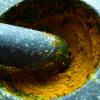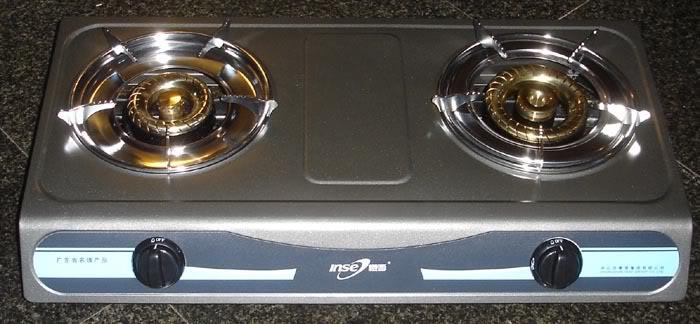Search the Community
Showing results for 'wok'.
Found 5,160 results
-
Wok cooking - are home stoves really not hot enough?
jsager01 replied to a topic in China: Cooking & Baking
i think every poster on this thread has interpreted the OP and subsequent posters in every which way, and they are mostly correct in their own interpretations :-)) If by 'true' Chinese cuisine you mean as in the 'western' countries, or as in China? If it is as in the 'western' countries, then it is predominantly Cantonese or its derivatives, and wok hei IS a big deal in quite a lot of Cantonese stir-fry. But, Cantonese cuisine (Yuè cài) is not only about stir fry or wok hei (think dimsum, steamed seafood, blanched kai lan, etc). However, if it is about stir fry in China in general, then all bets are off, as there are at least 8 regional cuisines, of which Yuè cài is only one of them, and they differ significantly from each other. If it is only about achieving wok hei at home (are home stoves not really hot enough) as compared to what a restaurant can dish out, then IMO, its something like asking if one can produce a great grilled steak at home as compared to what can be expected from a steak restaurant, ie do most home cooks need or have an external/industrial/whatever grill and sous vide to achieve the same results? Also, a great steak, or a great wok hei, is very subjective, and if it came from ones own kitchen, one may tend to be less demanding, especially if most of the wok hei/steak experience is from ones own cooking. If it is a more general question about heat intensity and control and how it has evolved in Chinese cooking techniques, then you may want to watch this video that i had previously posted inhttp://forums.egullet.org/topic/145563-chinese-cuisine-and-cooking-techniques/The first episode is " optimal heating ' and you may then agree that it is not all about high flaming heat, and sous vide is not going to be adopted any time soon anywhere in China. Why flat bottomed on a gas stove? and why cast iron which will weigh a ton and how does one flip the contents during woking? it does not take much practice (using raw rice in a cold round bottom carbon steel wok) to learn that technique, which is somewhat similar to flipping pancakes (flapjacks), and is part of the art of achieving wok hei with or without a nuclear reactor as the heat source? I believe, as i have no proof, that Maillard reaction can only explain a small part of what it takes to achieve wok hei. happy woking. -

Wok cooking - are home stoves really not hot enough?
liuzhou replied to a topic in China: Cooking & Baking
I Did I suggest they shouldn't? Anywhere? I was asked what I felt the situation was regarding home cooking and wok hei in China. I answered that. i have no idea what relevance sous vide has here. Are you proposing sous vide wok cooking? -

Wok cooking - are home stoves really not hot enough?
Keith_W replied to a topic in China: Cooking & Baking
It's more than the Maillard reaction, there is also the Liedenfrost effect. A superheated surface instantly vaporizes any liquid that comes into contact with it, causing food to float on a bed of steam. This, combined with the typical stirring and tossing of wok cooking tends to selectively cook the surface of foods. Just because many Chinese home cooks don't have a high powered wok burner does not mean that the passionate cook should not bother. I don't think that people on eGullet are average cooks - this forum is the birthplace of Modernist Cuisine, we witnessed the birth of Alinea, and I am willing to wager that more of us own sous-vide machines than the general population. A high powered wok burner will give you different results than most piddly little stovetop hobs and in most cases it would be better. Why else do restaurants use it? -

Wok cooking - are home stoves really not hot enough?
dcarch replied to a topic in China: Cooking & Baking
Maillard reaction, no question. but I have been thinking: In General Chemistry 101, I remember that chemical reaction can be initiated and/or accelerated under very high heat and vigorous agitation. Would it be possible that under extreme heat and stirring, new flavor compounds is created between various seasonings and food ingredients? beyond/in addition to maillard reaction? wok hei = C12H22O11CO(NH2)2NO2 CH3CH2OCH3? dcarch -

Wok cooking - are home stoves really not hot enough?
Hassouni replied to a topic in China: Cooking & Baking
A lot of the Chinese diaspora is Cantonese, so that may explain the prevalence of the wok hei concept abroad. -

Wok cooking - are home stoves really not hot enough?
Keith_W replied to a topic in China: Cooking & Baking
My jaw dropped open in amazement. Close to everyone I know knows about wok hei. They even know that if you order fried noodles in a restaurant, you try not to order two servings of the same dish because the chef will cook both servings at once and divide it in half - cook two servings, get less heat, get less wok hei. -

Wok cooking - are home stoves really not hot enough?
liuzhou replied to a topic in China: Cooking & Baking
I honestly don't think there is a question. It is not something Chinese home cooks obsess about the way some westerners do. They don't seem to even think about, if they even know about it. I have just conducted a quick and totally unscientific survey of 10 Chinese friends who are keen home cooks. Half asked me what is is 'wok hei'? ( I asked them in Chinese and they had never heard the word.) The others guessed what it is but said it isn't an issue at home. They don't expect it or need it. The idea that you cannot stir fry on a home cooker is ridiculous. Literally millions of Chinese people do so two or three times a day - even in Sichuan! -

Wok cooking - are home stoves really not hot enough?
heidih replied to a topic in China: Cooking & Baking
Liuzhou - can you address the whole wok hei at home question in terms of home cooking in China versus restaurants? The first time I saw someone use a real wok as opposed to the teflon electric ones being demonstrated in stores way back when, it was here in the states on a regular gas stove. I went to pick up my kid and the mom who was born and raised in Taiwan was making dinner. While waiting for the kids to pick up their toys I watched as she cooked a simple beef and gai lan dish. What impressed me was the progression of the ingredients into the pan, the movement of them, and the slicing. I did not have the opportunity to taste it but the smell made my tummy growl in anticipation. -

Wok cooking - are home stoves really not hot enough?
Hassouni replied to a topic in China: Cooking & Baking
The electric coil stove at my parent's house gets hot enough to IGNITE the oil in my wok if I leave it too long without food in it. As long as I don't overcrowd it, it gets plenty damn hot. In our London flat, the gas stove is hotter than ANY cheap apartment gas stove I've used, and is equally sufficient. Cheap apartment gas stoves, however, SUUUUUCK. I have yet to see how the stove at my new condo fares, it's a GE profile gas one. One thing to keep in mind when cooking at such high temperatures is that your kitchen will get EXTREMELY smoky, which may be why some say that stir-frying "can't" be done at home. (also, the comment about Sichuanese cooking not really having a concept of wok hei seems right, I can't think of any Sichuanese dishes that employ it, or are even stir fried (chao) - Gong bao chicken would be a famous exception, but everything else seems braised, dry fried, simmered, etc.) -

Wok cooking - are home stoves really not hot enough?
liuzhou replied to a topic in China: Cooking & Baking
Most Chinese homeowners cook on stoves like the one pictured below. They are no hotter than regular western stoves. I've never seen a "blast furnace" wok burner anywhere other than restaurants and wouldn't know where to buy one for home use. -
Wok cooking - are home stoves really not hot enough?
HungryC replied to a topic in China: Cooking & Baking
Dunno about Chinese homes and blast furnace gas heat, but I do know that it's pretty easy to get ultra high heat with a simple charcoal wok stove. I see the terra cotta and tin wok stoves at local Asian markets for about $20-30. Many folks use a chimney starter to good effect. -
Wok cooking - are home stoves really not hot enough?
seabream replied to a topic in China: Cooking & Baking
patrickamory - Completely agree. I learned to stir-fry the Chinese way with that same book a few years back. And yes, she gets all the credit for the good results I've gotten in my home stove. I was aware of outdoor wok burners, but the Weber cut-out hole for the grill was new to me. The Weber hole seems brilliant (the fact that I have a Weber grill and a round bottomed wok make it even more brilliant from my perspective). -

Wok cooking - are home stoves really not hot enough?
patrickamory replied to a topic in China: Cooking & Baking
Grace Young in The Breath of a Wok gives some seriously well thought out advice on how to get as close as possible to wok hei on a Western stove. She recommends a flat-bottomed cast-iron wok, properly seasoned, used on a gas stove. Her tips include preheating to the right degree, the usual swirling technique for liquids, never cooking more than 12 oz. of meat at a time (and letting it sear for 30 secs, stir for 20 secs, sear for 30 secs), and making sure to thoroughly dry all vegetables. And more. I'm sure you're never going to do as well as a wok burner outside, or a Weber with the circular cut-out hole in the grill for a round-bottom wok to sit in. But then again, wok hei is a Cantonese concept (or so Young argues) - Fuchsia Dunlop doesn't ever refer to it in her Sichuanese book that I can find. Don't get me wrong, I'm all in favor of the hottest heat imaginable for stir-fries, but I feel like I've gotten some great results following Young's recommendations for technique. This book is indispensable. -
Wok cooking - are home stoves really not hot enough?
seabream replied to a topic in China: Cooking & Baking
dcarch - That video helps me grasp what 200K BTU means heidih - Agreed. Wok shape/material is very important. I have two woks at home, with different materials (cast iron and carbon steel) and different shapes (round bottomed and flat bottomed). Even though I have a favorite wok, I would say that even with my least favorite wok I can get decent browning on the outside and an interior that is not overcooked. But yes, point taken, it's not just about the stove, having the right wok has a huge impact in the results. -

Wok cooking - are home stoves really not hot enough?
heidih replied to a topic in China: Cooking & Baking
Based on discussion like this one http://forums.egullet.org/topic/118417-woks-buying-caring-and-use-of/?hl=%20wok - it would seem that the type of wok is also a major factor in how the food cooks. -

Wok cooking - are home stoves really not hot enough?
dcarch replied to a topic in China: Cooking & Baking
Just like you home stove/wok? dcarch -
Wok cooking - are home stoves really not hot enough?
HungryC replied to a topic in China: Cooking & Baking
A 10 second google search on commercial wok stoves reveals a wide spread of BTU output, from a lower end of 100K all the way up to 225K. -
Wok cooking - are home stoves really not hot enough?
HungryC replied to a topic in China: Cooking & Baking
200 BTU is nothing....maybe you have a few zeros missing? Commercial wok stoves have around 125K or more per burner. Of course, the commercial stoves are designed for use with big restaurant sized woks. -

Wok cooking - are home stoves really not hot enough?
Bjs229 replied to a topic in China: Cooking & Baking
I have cooked on some weak gas stoves before. I think if you allow the wok or pan to get hot enough to sear and don't overload.. Authentic stir fry is attainable. IMHO More btu = speedier heating , easier control. -
I frequently hear that true Chinese stir-fries can't be cooked in home stoves because they aren't hot enough. I'm curious to hear what fellow egulleters think about this. I often cook Chinese food at home on my 20-year old average gas stove and I think that I am getting good results. I am able to get brown spots on veggies and proteins without overcooking the interior, on medium-high heat. I find that when I turn the heat all the way to high, I need to move faster and because precise timing is more important, I'm more likely to make mistakes (e.g. sometimes the oil will overheat, or veggies get a bit too scorched). In other words, I don't feel limited by the heat level of my old gas stove. I understand that in Chinese restaurants they have crazy hot stoves - I heard 200 BTU (is this even possible?) I have no doubt that professional cooks can handle the speed and precision of 200 BTU, but I'm wondering if that's really necessary to achieve the "wok hai" that we associate with a good stir-fry. There is no controversy in the fact that home stoves are capable of causing the Maillard reaction in western cooking. Meaning, we can all cook a thin piece of fish or meat that browns on the outside without overcooking on the inside. I don't see how this is different from wok cooking. Or am I not thinking correctly? Would love to hear your thoughts!
-
Plan: 2014 Chocolate & Confectionery Workshop Las Vegas
Alleguede replied to a topic in Pastry & Baking
Melissa and jean Marie are fantastic people and professionals. This is worth every moment. If I can fly out I will definitively wok at it. -
Cast iron skillets and dutch ovens in several sizes are all I use for roasting, all the way up to a 17" skillet. No problems under the broiler. For the larger skillets I use a wok lid if a lid is need.
-
Seerious Eats this week has a digital Wok issue. Touts Kennji' s new book...BUT the essays/profiles of Grace Young (noted cookbook author) and Tane Chan (owner of the famous Wok Shop in San Francisco) are worth a read https://www.seriouseats.com/the-wok-digital-issue-5218092
-
Ma La Xiang Guo (Hot and Numbing Fragrant Pot, or Dry Hot Pot)
KennethT replied to a topic in China: Cooking & Baking
Does anyone know the reason why, in the examples above, hot oil is poured onto the dried spices rather than the spices being fried in the oil? I don't know if my question is clear. For some dishes using a lot of spices, the oil is heated in a pan/wok, aromatics (garlic/ginger/etc) stir fried and then the spices added and are stir fried until fragrant. But the examples above heat the oil and pour onto a pile of spices and let sit. Is there a reason for the 2 techniques or are they more of a matter of convenience? -
Hi Everyone, I've made my career as a scientist and researcher, but have dabbled in cooking as an amateur--even did a few taste studies when I was a faculty member at Cornell University school of hotel management. but Seven years ago, I decided to build up from scratch a small home cooking kitchen that would rely on induction and convection--and be ergonomic friendly. My induction units are from Vollrath, and I have two inexpensive Oster ovens--a toaster and a roaster. I have two separate sets of pans--one set are enameled cast iron, the other are stainless. I have selected them to carry out cooking at lower temperatures--around 250 degrees. I steam in several ways--mostly with an insert--and I often use my Staub crepe pan for a lots more than pancakes. If I can, I always try to consider new products and technologies. In eci, I have a Staub perfect pan as a home cook substitute for a wok, and Hestan nanobond for my 11" fry pan. If I could afford it, my next step for induction would be the control freak. In cutlery, I'm interested in fusion between Eastern and Western kitchen knives--especially involving newer processes. My most recent interest for cultural fusion is the Japanese deba (I've just reviewed the Kai Seki Magoroku Kinju on Chowhound), and my most interest for new processes are dual core knives. More than anything, my number one goal is to have fun! Ray



